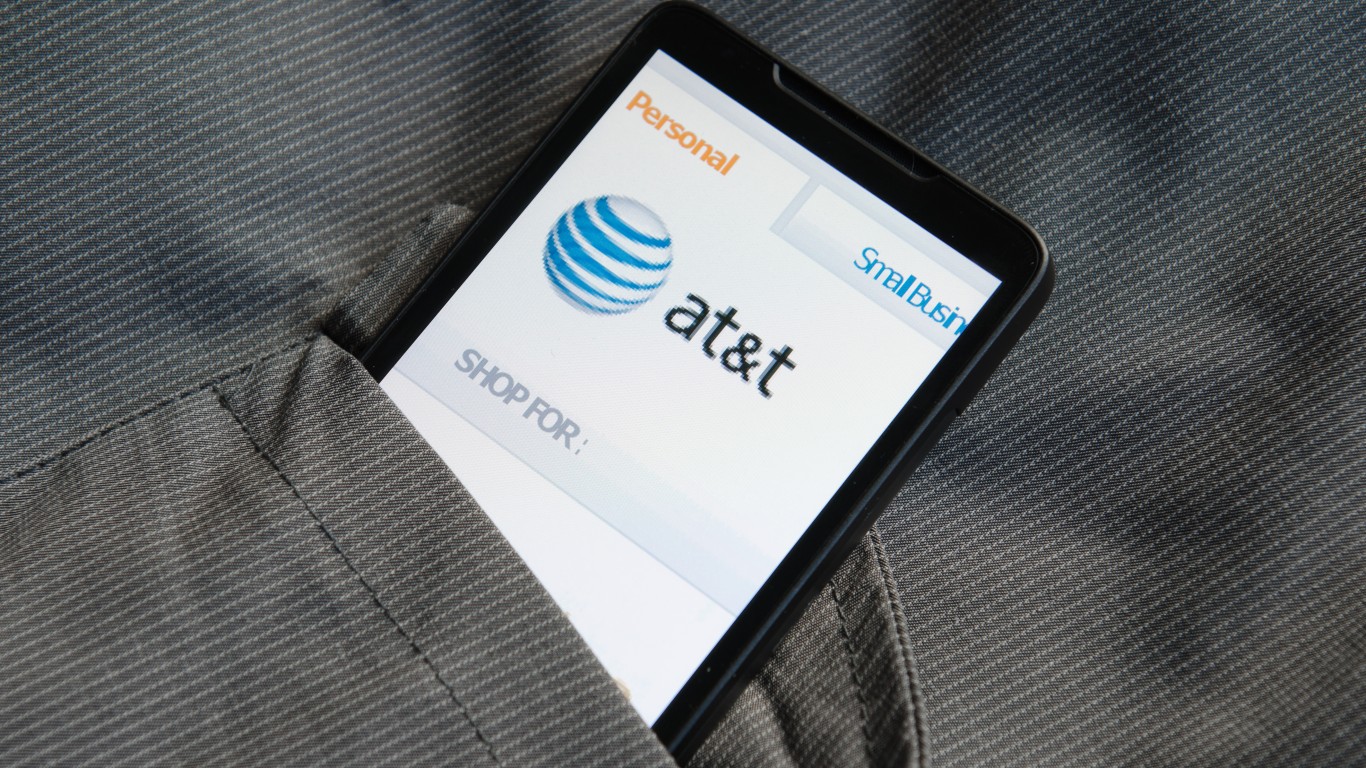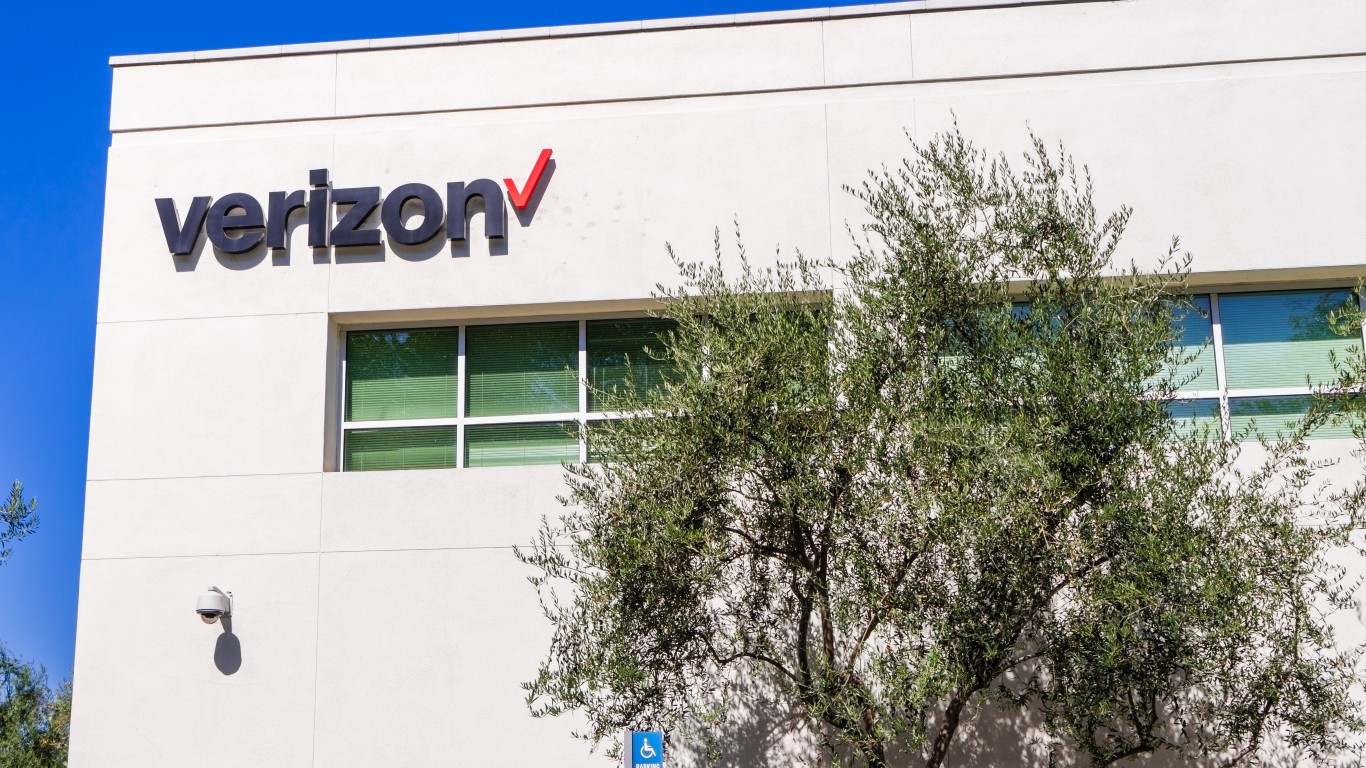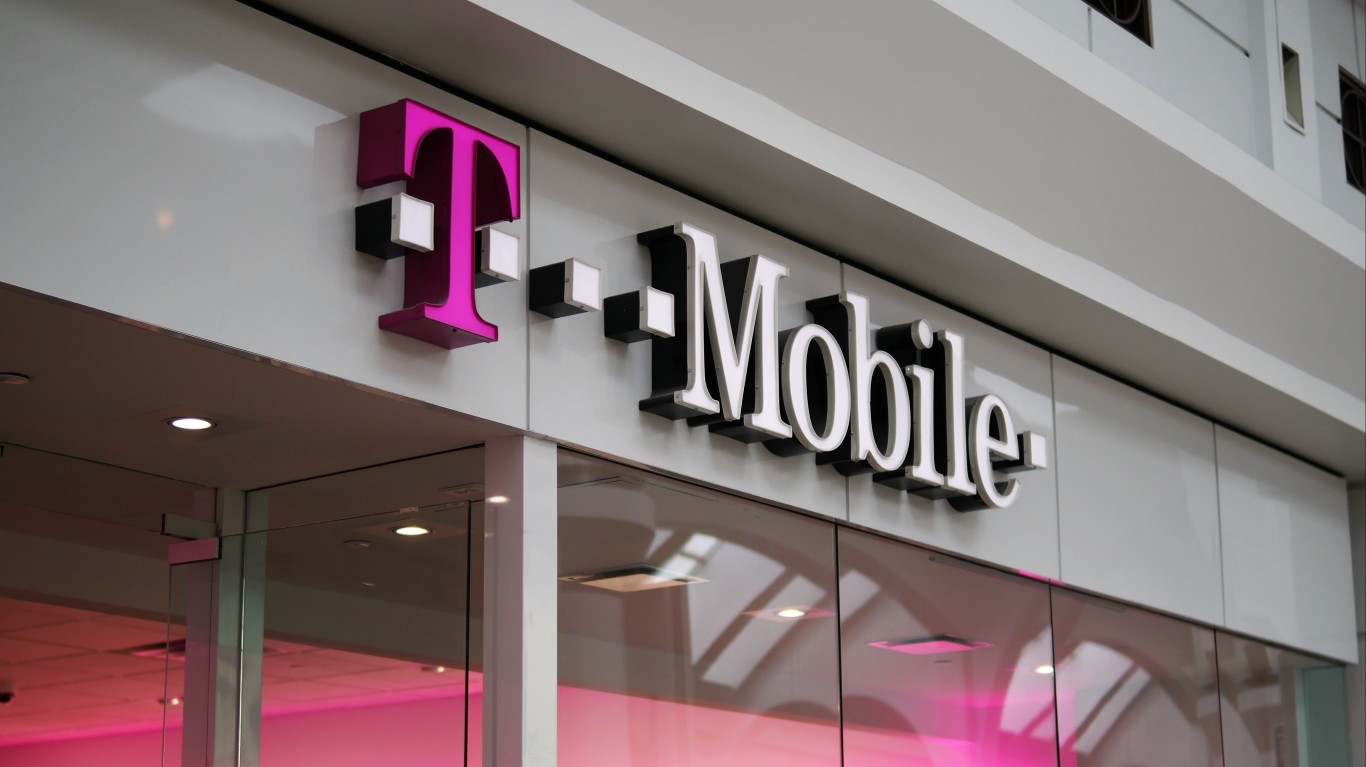
AT&T Inc. (NYSE: T) reported third-quarter 2020 results before markets opened Thursday. The telecom giant reported adjusted diluted earnings per share (EPS) of $0.76 on revenues of $42.3 billion. In the same period a year ago, the company reported EPS of $0.94 on revenues of $44.6 billion. Third-quarter results also compare to the consensus estimates for EPS of $0.76 on revenues of $41.6 billion.
Consolidated revenues dropped 5% year over year due primarily to the effects of the COVID-19 pandemic. International roaming revenue fell, as did revenue at WarnerMedia and AT&T’s domestic wireless services. Increased advertising revenue from sports programming and higher sales of wireless equipment offset a larger revenue decline.
Operating income fell nearly 23% to $6.1 billion and operating margin fell from 17.7% to 14.5%. After adjusting for amortization and other items, operating income margin fell from 22.2% in the third quarter of 2019 to 19.4%. Free cash flow for the quarter totaled $8.3 billion and net debt fell by $2.9 billion sequentially.
AT&T guided free cash flow for the full year of at least $26 billion, with a full-year dividend payout ratio in the high 50% range. In the third quarter, the company paid out $11.2 billion in dividends, or about 57% of free cash flow totaling $19.7 billion. Capital spending totaled $13.3 billion in the quarter.
The company did not offer further guidance, but analysts have a consensus forecast for fourth-quarter EPS of $0.75 and $44.2 billion in revenue. For the full year, analysts are looking for EPS of $3.18 and revenue of $169.7 billion.
The company’s entertainment media segment reported quarterly revenue of $10.1 billion, but video revenue (primarily DirecTV) declined by 12.2%. Total operating revenue for the group fell by 10.2%, and operating income margin fell by two full percentage points to 7.7%. Premium TV connections dropped by 16.3% to 17.1 million. Fiber broadband connections rose by 26.6% to nearly 4.7 million.
In the WarnerMedia segment, HBO revenue fell by 2.1% year over year to $1.8 billion, while Turner revenue rose by 5.6% to $3.2 billion. Warner Bros. studio revenue fell 27.7% to $2.4 billion and, for the segment as a whole, operating expenses rose by 4.8%.
Worldwide subscribers to HBO and HBO Max topped 38 million and 57 million, respectively. HBO Max activations more than doubled sequentially and the company said it is on track for a 2021 launch of an ad-supported version of HBO Max.
The company added a million net new postpaid wireless subscribers in the quarter and more than 350,000 new fiber broadband subscribers.
For now, AT&T appears to have the operating cash flow to support both its capital spending requirements and its hefty dividend payouts, and that’s what pushed the share price up more than 6% after the opening bell. At last look, the stock traded up about 5.7% to $28.23, in a 52-week range of $26.08 to $39.70. The consensus price target on the shares is $31.96.
Take Charge of Your Retirement In Just A Few Minutes (Sponsor)
Retirement planning doesn’t have to feel overwhelming. The key is finding expert guidance—and SmartAsset’s simple quiz makes it easier than ever for you to connect with a vetted financial advisor.
Here’s how it works:
- Answer a Few Simple Questions. Tell us a bit about your goals and preferences—it only takes a few minutes!
- Get Matched with Vetted Advisors Our smart tool matches you with up to three pre-screened, vetted advisors who serve your area and are held to a fiduciary standard to act in your best interests. Click here to begin
- Choose Your Fit Review their profiles, schedule an introductory call (or meet in person), and select the advisor who feel is right for you.
Why wait? Start building the retirement you’ve always dreamed of. Click here to get started today!
Thank you for reading! Have some feedback for us?
Contact the 24/7 Wall St. editorial team.



